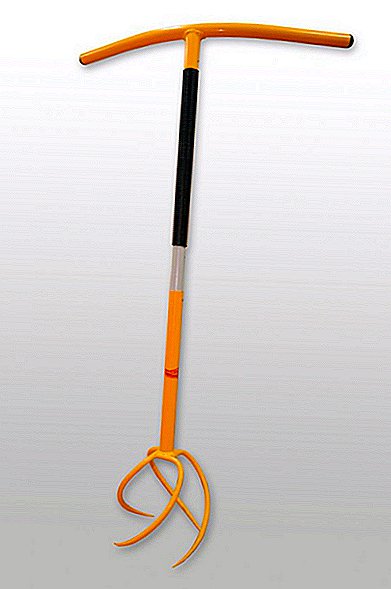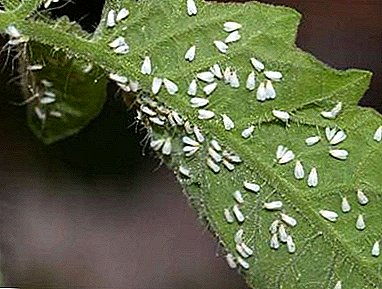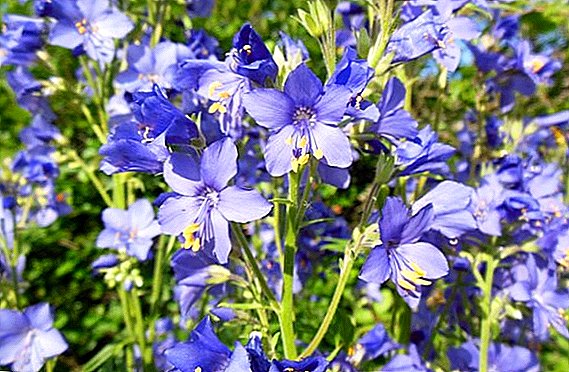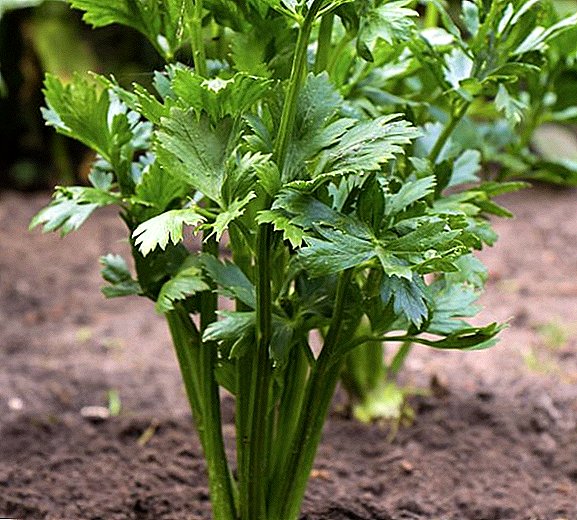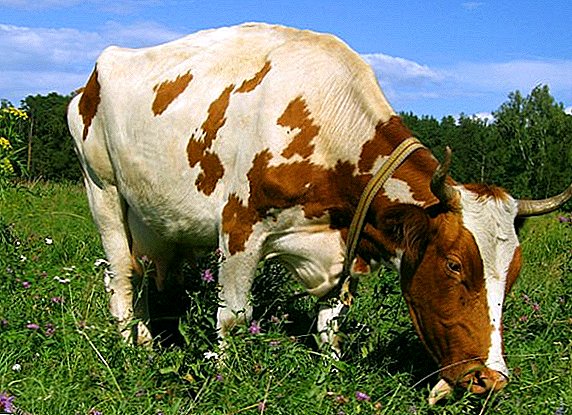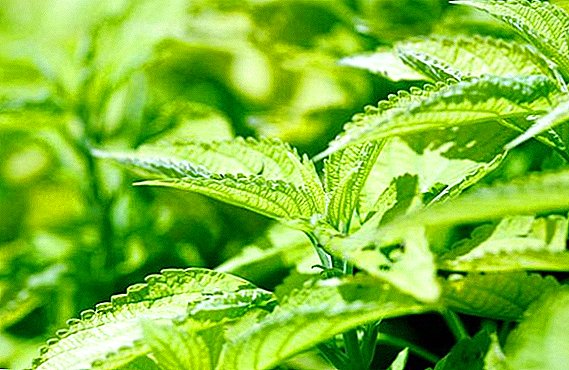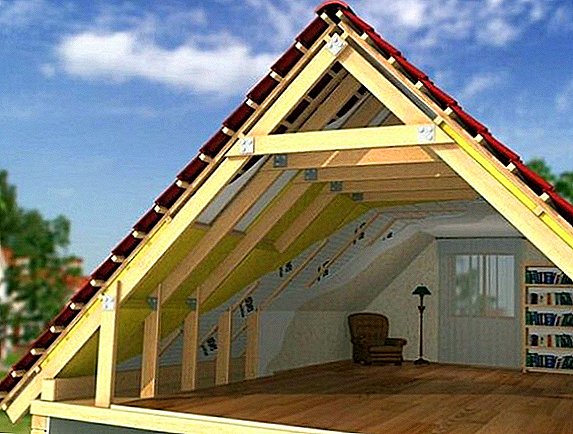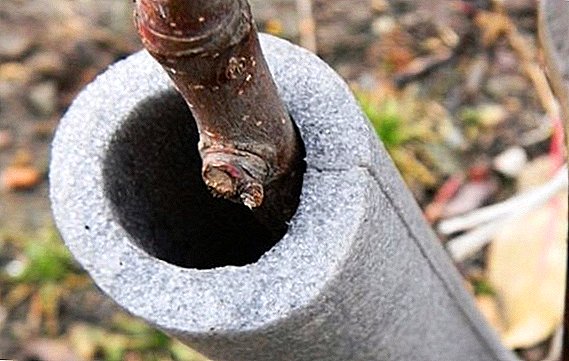 When winter comes, and seasonal work in the country and in the garden stops, this does not mean that the trees no longer need care.
When winter comes, and seasonal work in the country and in the garden stops, this does not mean that the trees no longer need care.
Trees need to be sheltered, about how and how to shelter young apple trees for the winter, we'll talk in this article.
Why cover the apple tree
Many people who understand little in the technique of gardening, think that covering the apple trees for the winter is necessary so that they will not be destroyed by a strong winter frost. But in reality this is far from the case. Severe winter frosts can be scary only to certain varieties of apple trees, and then, if you grow them in the Siberian region. In fact, the entire preparation of trees for the winter is largely done to protect the apple trees from hares. In the absence of a normal amount of food, these rodents eat the bark of fruit trees with great pleasure. In addition to hares, the bark is also not averse to eat rats and even beavers (if you live near the reservoir).
Important! In the southern regions of our country, it is not necessary to protect the root system of seedlings from frost, otherwise there is a risk of prolonging the growing season, which can lead to the death of the plant.But rodents are not the only pests of apple fruit trees in the cold winter season. Strong and gusting winds can damage the bark of plants, and this, in turn, can lead to the death of some branches or even the whole tree, especially if the tree is young enough.
Sun spring rays can also damage apple trees in your garden. The sun, which is so welcome for us, can burn the bark of fruit plants.
Check out such varieties of apples as "Candy", "Medunitsa", "Bogatyr", "Spartan", "Lobo", "Zhigulevskoe", "Mantet", "Dream", "Melba", "Sinap Orlovsky".And if the bark in winter is affected by any of the above pests, the tree will no longer be able to grow and bear fruit in normal conditions. As a result of damage to the bark, the yield of an apple tree can decrease by a factor of 2 or even 3 times. In addition, various diseases (mealy dew, scab, etc.) are more commonly observed in trees affected by winter.
How to start preparing the apple for the winter
Preparation of apple trees for the winter should start with cleaning fallen leaves. Some gardeners believe that fallen leaves play the role of mulch, and should not be removed.
But this is not entirely true, the fact is that in such leaves a multitude of pathogenic microorganisms, fungi and bacteria have accumulated, which in the winter period can affect the bark and shoots of trees.
The same swinging and rotten apples, which have not fallen from the trees (or fallen). They also accumulate a lot of larvae, which, with the arrival of spring heat, will begin to eat again different parts of the apple trees. Therefore, all rotten fruit must be removed from the tree in time.
In late autumn, before the start of frost, the bark of trees should be processed with iron or copper sulphate. Also, do not forget to cultivate the soil around the apple trees, because there may be a lot of microscopic pests of the tree, and the vitriol mixtures can destroy them. Whitewashing the lower part of the tree trunk with lime can protect the plant from small insects and the sun's spring rays. In addition, such a procedure is able to protect apple fruit plants from frost breeders (they often appear after sudden temperature changes). But before you start whitewashing, do not forget to collect mosses and lichens from the bark.
Mulching is also an important step in preparing apple trees for winter. Lay the mulch around the tree so that the diameter of the mulch is equal to the diameter of the tree crown. In the role of mulch is well suited straw, sawdust or peat. The thickness of the mulch layer should be 10-15 cm.
Did you know? Older apple trees without shelter for the winter can withstand temperatures down to -35 ° C.Another important step in preparing apple trees for winter is pruning branches and forming a crown. For pruning old and dried branches, use a sharp shears or a hacksaw. Young shoots can be shortened by one third.
 All branches are desirable to cut at a sharp angle. Places of cuts need to cover with linseed oil or oil paint. All pruned branches need to be collected in one pile and burned, since they can inhabit a variety of bacteria and fungi (especially on dried branches).
All branches are desirable to cut at a sharp angle. Places of cuts need to cover with linseed oil or oil paint. All pruned branches need to be collected in one pile and burned, since they can inhabit a variety of bacteria and fungi (especially on dried branches).Also for normal wintering apple trees need abundant autumn watering. Around the tree, make a small hole, and then fill it with water. Under one plant at a time, you can pour 200 liters of water. The procedure is repeated 2-3 times. Watering will help the root system of fruit plants better tolerate winter frosts.
When you need to start covering the apple trees
There are no exact dates for sheltering apple trees, as there are several climatic zones in our country, and the dates are directly dependent on the latter.  Many experienced gardeners recommend covering apple trees when the cold frosty temperature is fully established outside (the average daily should be about 10 ° C). If you start to cover fruit plants ahead of time, then you can simply simply destroy them.
Many experienced gardeners recommend covering apple trees when the cold frosty temperature is fully established outside (the average daily should be about 10 ° C). If you start to cover fruit plants ahead of time, then you can simply simply destroy them.
The apple trees, which were sheltered early, can start growing again in the winter. After feeling a certain cold, when you cover the plant, it begins to feel warm and can dissolve the kidneys.
In such cases, a plant with a 50% chance may die in winter. Well, if this happens with a sapling, then the probability increases to 80-90%. Therefore, the selection of the correct timing of shelter is an important factor in the preparation of apple trees for the winter.
How to cover apple trees for the winter
If you are still tormented by the question of how to shelter an apple tree from frost, then listen to our recommendations, which we will provide below. 
Seedlings Shelter
It is necessary to cover seedlings more carefully than mature trees. Varieties that do not have good frost resistance can freeze out at the very first winter night frost.
All winter varieties of apple trees that have good frost resistance can be planted in the fall, and the method of sheltering such seedlings is slightly different from the shelter of non-frost resistant varieties that are stored in the winter for spring planting.
Important! The crown of young apple trees must be completely covered with snow. You can leave without shelter only vertically growing uncircumcised shoots.Step-by-step method of sheltering non-frost-resistant plants that are prepared for planting in the spring:
- Find in your garden or on the site a place where in winter there will not be strong northern winds. This place should also be as dry as possible, the best terrain is best suited.
- Now you need to dig a hole 50 cm deep and 35-40 cm wide.
- Roots of seedlings before planting should be dipped in a clay mash, and only then dropping.
- Sprinkle the root system of young saplings with a mixture of peat and humus. After the powder, the soil should be compacted a little before a small fossa is formed. The crown needs to be covered with a layer of agrofibre or dry spruce branches, so rodents will not be able to taste your apple-tree.
- Throughout the winter, throw snow under the seedlings. It helps apple trees to spend the winter comfortably. If the snow near the tree is not enough, then its root system may freeze.
 Also try to ensure that young twigs do not break under the weight of snow. When spring comes, do not immediately remove all protection, but do it gradually. After all, sometimes night frosts can return even in May.
Also try to ensure that young twigs do not break under the weight of snow. When spring comes, do not immediately remove all protection, but do it gradually. After all, sometimes night frosts can return even in May.The second method of shelter is well suited for frost-resistant varieties of apple trees:
- In this case, you also need to find a more or less dry place, without underground floods.
- You need to dig the chosen place and add a little peat and humus to the soil (if the soil ate loamy, then you need to add sand).
- Next you need to dig a hole with the same size as in the first method of shelter.
- Now you need to insert the seedlings so that they lean a little to the south. In this case, the risk of sunny spring burns will decrease by a factor of 2-3. Then we sprinkle the roots on the ground and trample down above.
- At this stage, the seedling must be watered properly. Abundant watering will help the apple tree to winter normally.
- Around a young tree need to expand the branches of wild rose, raspberry or blackberry. They will scare away many rodents.
- If in spring the temperature starts to rise, but there is still a lot of snow around the seedling, then it is better to remove it. Otherwise, the apple tree can sopret.
 Using these techniques, you can protect your seedlings not only from severe winter frosts, but also from various rodents (rats, hares, beavers, etc.).
Using these techniques, you can protect your seedlings not only from severe winter frosts, but also from various rodents (rats, hares, beavers, etc.).Shelter of adult trees
The trunk of apple trees must be covered with insulating material: agrofibre, roofing felt, cellophane film, etc. After that, under the apple tree you need to pour a large pile of snow.
And the more you distribute it, the better it will be for the plant. Snow helps the tree root system not to freeze out in winter. Next, you need to throw on the snow tops or brushwood.
If you have small trees in the garden, experts recommend covering their crown with a layer of snow. Moreover, to ensure that the tree was constantly in the snow, you need throughout the winter.
Did you know? People began to use wild apple varieties in the Neolithic period. This was confirmed by excavations in what is now Switzerland, where they found charred remains of a plant.In the spring, when the first warm sunshine falls, snow can be thrown off if it does not melt itself.
 It is better not to take off the material with which you warmed the trunk. Wait until early April. Sometimes strong frosts can come even in the middle of spring, and this can badly affect the apple tree.
It is better not to take off the material with which you warmed the trunk. Wait until early April. Sometimes strong frosts can come even in the middle of spring, and this can badly affect the apple tree.How to protect the apple from rodents
Many gardeners ask themselves: how to protect saplings from hares? Sometimes rodents do bring a lot of problems, especially if your summer cottage is not far from a forest or a pond. In such cases, you need to take various security measures, otherwise the rodents can spoil the bark of your apple tree, as a result of which it may die.
Learn about the major pests of apple trees.To protect fruit trees from hares, rats, beavers, etc. use insulating material: cherry tree branches, pine needles, raspberry, willow or hazel stalks. Insulating material is tied with roofing felt, burlap or wire mesh. Tying need skeletal branches at the base and shtaby.
 After intense snowfall, snow near the apple trees should be tamped. Large piles of snow will prevent rodents from eating the bark of the plant. By the way, you can take the branches of spruce or pine and tie them to the stem by needles down. These trees will avoid the hares.
After intense snowfall, snow near the apple trees should be tamped. Large piles of snow will prevent rodents from eating the bark of the plant. By the way, you can take the branches of spruce or pine and tie them to the stem by needles down. These trees will avoid the hares.Also, do not forget to remove all fallen leaves in the fall. The smaller the foliage, the fewer mice and rats you will have in the garden. Mice and rats can be poisoned by laying poisonous substances in their burrows. All these methods will help to effectively fight the rodents in your garden.


